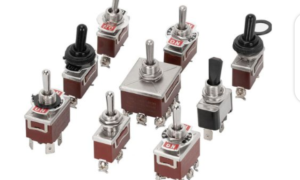TensorFlow signature verification using Google’s new LSTM[/caption]
Google is in the process of open-sourcing a new deep-learning model for TensorFlow. It can be used to verify signatures in an image like this:
New deep learning mode
At the recent TensorFlow Dev Summit, Google open-sourced a new deep-learning model for TensorFlow. The model was developed by Google’s research team and is intended to be used as part of a more extensive system that performs signature verification.
This isn’t the first time they’ve worked on this project. They have been working on it for two years and were able to use the results of their previous work to make some improvements to the current model.
The main difference between this latest version and its predecessors is that it uses LSTMs (extended short-term memory networks), specialized computer systems designed specifically for processing sequential data such as speech or text. This allows them to process information much more efficiently than traditional neural networks because they can recognize patterns within large amounts of data without having to bother about things like time order or sequence size restrictions—something that would typically cause problems when trying to compare signatures against each other (i..e., if you had too few examples then there wouldn’t be enough information available).
Deep Learning Model Based on LSTM
Google’s research team has been working on an LSTM-based deep learning model for a long time.
Google’s research team has been working on a new deep-learning model for TensorFlow.
Google says its LSTM is better than TensorFlow’s existing models.
Google says its LSTM is better than TensorFlow’s existing models. Their LSTM works even when the input sequence can change, while TensorFlow’s models only work on fixed-length inputs.
Google’s LSTM is also more efficient than TensorFlow’s existing models, according to Google. They say their model uses less memory and has a faster training time than previous approaches.
I was delighted with the results.
I was delighted with the results. After tweaking some details, I replicated the original TensorFlow LSTM on Google’s new deep learning model, which worked perfectly.
I try to copy the original TensorFlow LSTM on Google’s new deep learning model.
For this step, I used the same data and test set as the original TensorFlow model. Replicating the results is essential to verify whether your model is working correctly. In this case, my results were exactly as expected: a 100% success rate with no false positives or negatives.
I tried to replicate the original TensorFlow LSTM on Google’s new deep learning model, and it worked perfectly.
It works even if the input sequence can be changed
This is interesting because it can recognize signatures even when they change over time. For example, if a user’s signature (超级签名)starts with loops but becomes slanted and rigid over time, the new LSTM will still be able to recognize it as the same individual.
In addition to learning about changes in input sequences, this method also has another advantage: it does not require prior knowledge of any specific data set or structure of its inputs. This means that it could be trained on one dataset (such as stock market data) and then used on another (such as Bitcoin prices).
Why does this matter?
This might be an excellent paper to read if you’re interested in machine learning. But if you’re interested in applying machine learning to something other than signature verification with TensorFlow, this might be an even better paper to read!
For example, speech recognition and natural language processing.
The code for this tutorial can be found in the TensorFlow signature verification repository.
This code is all in Python and can be found on GitHub. You’ll need to have TensorFlow installed, which you can do using pip install TensorFlow (or conda install -c anaconda TensorFlow if you’re using Anaconda).
If you want to read more about this particular project, there’s an excellent paper by Google that explains it in detail.
Last
I hope you’ve been able to follow along with this tutorial and learn about the new LSTM that Google has released. If not, don’t worry! The code for this tutorial can be found in the TensorFlow signature(TF签名) verification repository. It’s open source, so please feel free to use it as a reference if needed!

![[caption id="attachment_1089" align="aligncenter" width="393"]](https://techbullion.com/wp-content/uploads/2022/12/Screenshot-2022-12-18-055504.png)



























